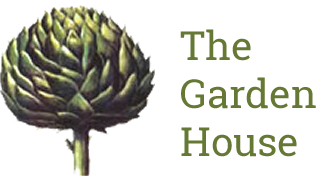Naturalistic Plantings in Brighton & Hove’s Parks and Gardens
Posted:1 June 2014
Ever wondered who is responsible for the naturalistic and very beautiful planting schemes in our local parks and gardens? The gardeners, of course, but what about the design, planning and buying?
 In the City of Brighton & Hove that responsibility falls to Sarah Carlisle. Sarah has been in the horticultural trade for 16 years, having first studied Fine Art at Belfast School of Art, and is in charge of design, buying and growing for the City Parks Department which involves municipal soft landscape design and consultancy. She also manages the Stanmer Nursery where she has developed the retail section of the nursery specialising in perennials and chalk downland wildflowers.
In the City of Brighton & Hove that responsibility falls to Sarah Carlisle. Sarah has been in the horticultural trade for 16 years, having first studied Fine Art at Belfast School of Art, and is in charge of design, buying and growing for the City Parks Department which involves municipal soft landscape design and consultancy. She also manages the Stanmer Nursery where she has developed the retail section of the nursery specialising in perennials and chalk downland wildflowers.
Back in March this year Sarah came over to The Garden House to talk to us about her career, and the challenges and satisfaction to be found in her role.
Over the past 10 years Sarah has been instrumental in moving Brighton & Hove’s municipal planting away from the very costly, labour-intensive and old-fashioned annual bedding schemes and towards newer and more naturalistic planting styles using early bulbs, perennials and grasses mixed with annuals.
As Nursery Team Leader, Sarah and her team take the projects from the planning stage through to the final display. Among other areas you can see the results of Sarah’s planting schemes at Dyke Road Park, by Preston Drove and The Level, around the Old Steine fountain, in the linear beds at Victoria Gardens, and the circular bed at St Ann’s Wells Park where the old rose beds planted in the 1960s and 70s have been completely replanted.
Along the Lewes Road the verges have been machine planted with bulbs in what is called ‘river’ planting, creating dramatic naturalistic swathes of daffodils, muscari or alliums. Wildflower have also been planted, along the Lewes Road central reservation and in two large ‘meadows’ in Preston Park.
Favourite and much-used plants include Calamagrostis Karl Foerster, Pennisetum orientale Karly Rose, Sedum Maltrona and Sedum spectabile Iceburg, Verbena bonariensis, Nepeta racemosa “Walker’s Low’, Veronica spicata Royal Candles, Ricinus communis (castor oil plants), Ipomoea ‘blackie’, Cleomes and various Rudbeckias, Salvias, Verbascums, Miscanthus and Diascias.

On the whole the public response to the new schemes has been very enthusiastic; people greatly enjoy the softer colour schemes, walking through the taller plantings, or quietly sitting and contemplating the meadows. Volunteer initiatives such as health walks and ‘walk to school’ weeks more directly get adults and children into the parks and encourage healthier outdoors activities. A proposal to create a new outdoor theatre on the site of the former bowling green in the Dyke Road Park has been supported by the citys council, providing another great way to connect with our outdoor spaces.

The new planting schemes have also been designed to give longevity to the beds across the four seasons – bulbs in the spring, followed by early then late perennials and grasses, inter-planted with annuals. Finally many perennials and grasses are left in place through the winter months, their seed-heads providing structure and food for wildlife.
As well as providing many of the plug plants for the parks and gardens, the nursery at Stanmer Park is a fantastic resource for the at-home gardener. The selection of plants has increased considerably over the years to include shrubs, trees, perennials, grasses, wildflowers, vegetable plants and annuals.


